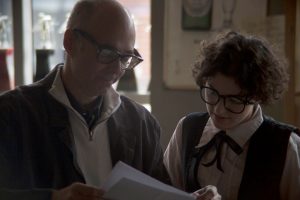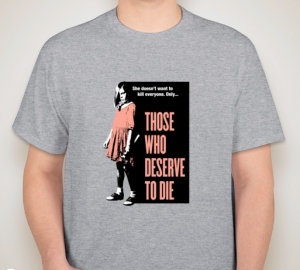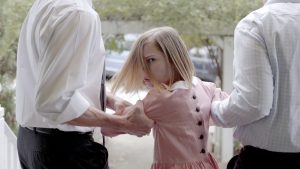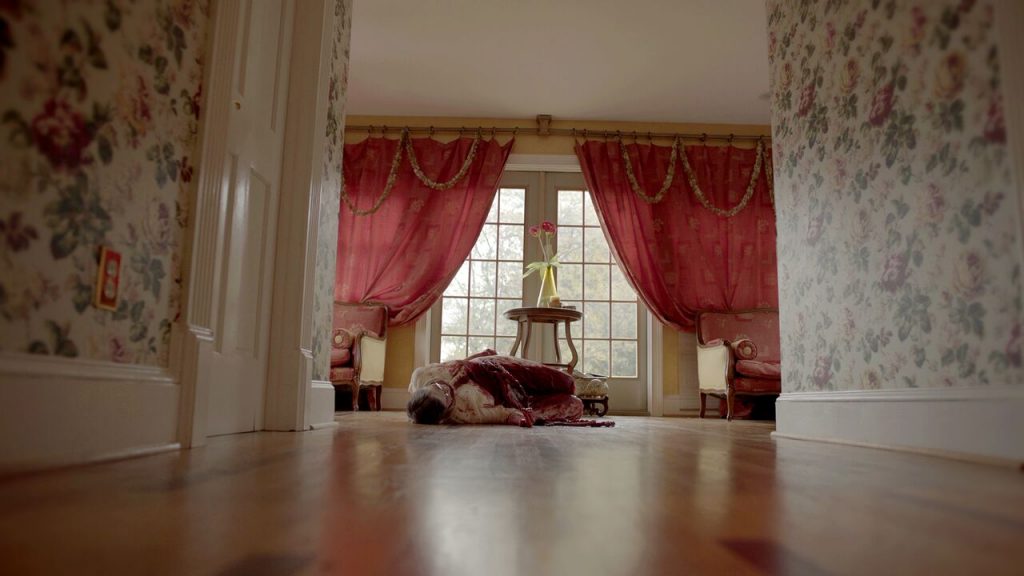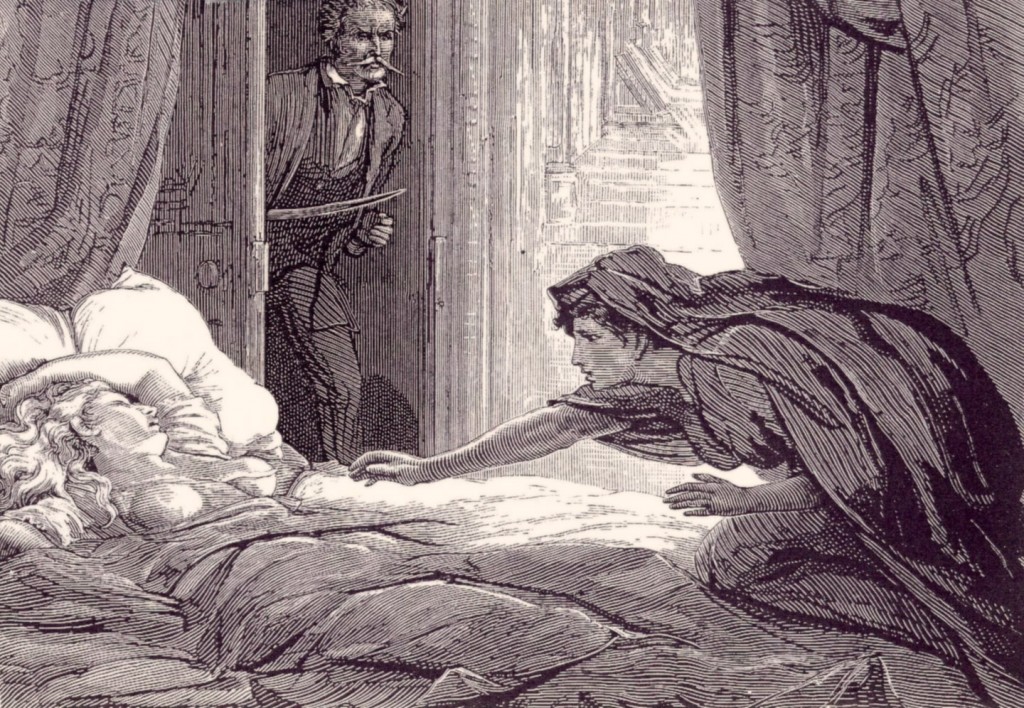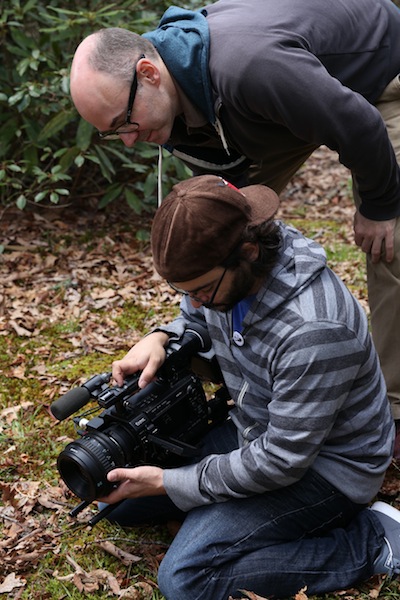by Anthony Taylor
Contributing Writer
Welcome to Apes on Film! This column exists to scratch your retro-film-in-high-definition itch. We’ll be reviewing new releases of vintage cinema and television on disc of all genres, finding gems, and letting you know the skinny on what to avoid. Here at Apes on Film, our aim is to uncover the best in retro film. As we dig for artifacts, we’ll do our best not to bury our reputation. What will we find out here? Our destiny.
Apes on Film also appears on Nerd Alert News. Check them out HERE!
 Night Gallery Season 2 – 1971-’72
Night Gallery Season 2 – 1971-’72
4.5 out of 5 Bananas
Starring: Rod Serling, Leslie Nielsen, Vincent Price, Laurence Harvey, Patty Duke, Elsa Lanchester, Stuart Whitman, Jill Ireland, Bill Bixby, Richard Thomas, Lana Wood
Directors: John Badham, Jeannot Szwarc, Jeff Corey , Jack Laird, John Astin
Rated: Unrated
Studio: Kino Lorber
Region: A (locked)
BRD Release Date: July 26, 2022
Audio Formats: DTS-HD Master Audio 2.0 Mono (48kHz, 24-bit)
Video Codec: MPEG-4 AVC
Resolution: 1080p HD
Aspect Ratio: 1.33:1
Run Time: 1164 minutes
5 Disc Set
CLICK HERE TO ORDER
Sigmund Freud famously said, “Sometimes a cigar is just a cigar,” but then again sometimes it’s not. Sometimes a painting is just a pretty way to ornament one’s walls, but sometimes, as Rod Serling might say, “Each one captures on a canvas, suspended in time and space, a frozen moment of a nightmare.” This was the premise of Serling’s second television series, Night Gallery.
The series began as a rotating segment in a wheel anthology series called FOUR IN ONE, with series mates McCloud, The Psychiatrist, and SFX (San Francisco International Airport). Only McCloud and Night Gallery made it to a second season, and Night Gallery became a weekly series under the supervision of producer Jack Laird and Serling. But in the case of this series, Laird was the creative show runner and Serling merely a staff writer and on-air host. As such, he had little control over the path the series took, and some of Laird’s choices didn’t sit well with the multiple Emmy winner.
More a horror anthology than The Twilight Zone, which had been comprised of mainly science fiction tales, Serling was very concerned with providing a continuity of viewer experience throughout each episode that was usually comprised of two or three stories. Laird, on the other hand found the format a suitable showcase for his own personal sense of humor and inserted a series of short “black-out” sketches as time fillers between stories. Only occasionally were these humorous sketches actually funny, unfortunately, and it did certainly break the tension between the horror-based stories in each episode.
Kino Lorber has released the second season of Night Gallery with an embarrassment of riches on the supplemental features department. Suffice it to say that the team who provided commentaries for the first season volume is back with guns blazing. Many special features from the earlier DVD release of the series are included as well, the full list is included below.
Though the set contains some very memorable episodes – Green Fingers, Class of ’99, Silent Snow, Secret Snow, Sins of The Father, The Caterpillar, and You Just Can’t Get Help Like That Anymore to name but a few – the real reason to buy this set is all of the amazing extras contained within. They do a lot of heavy lifting to fill in gaps in behind-the-scenes and production information and give context to many moments that might otherwise leave some people scratching their heads. As a snapshot of early 1970’s television horror, Night Gallery Season 2 is unsurpassed.
Blu-ray Extras:
– BRAND NEW 2K MASTERS
– LOST TALES FROM SEASON 2 (DIE NOW, PAY LATER/ROOM FOR ONE LESS/WITCHES’ FEAST/LITTLE GIRL LOST)
– NEW Audio Commentary for THE BOY WHO PREDICTED EARTHQUAKES/MISS LOVECRAFT SENT ME/THE HAND OF BORGUS WEEMS/PHANTOM OF WHAT OPERA? by Film Historian Craig Beam
– NEW Audio Commentary for DEATH IN THE FAMILY/THE MERCIFUL/CLASS OF ’99/SATISFACTION GUARANTEED by Night Gallery Authors/Historians Scott Skelton and Jim Benson
– NEW Audio Commentary for A DEATH IN THE FAMILY/THE MERCIFUL/CLASS OF ’99/SATISFACTION GUARANTEED by Television Music Historian Dr. Reba Wissner
– NEW Audio Commentary for SINCE AUNT ADA CAME TO STAY/WITH APOLOGIES TO MR. HYDE/THE FLIP-SIDE OF SATAN by Night Gallery Authors/Historians Jim Benson and Scott Skelton
– NEW Audio Commentary for SINCE AUNT ADA CAME TO STAY/WITH APOLOGIES TO MR. HYDE/THE FLIP-SIDE OF SATAN by Television Music Historian Dr. Reba Wissner
– Audio Commentary for A FEAR OF SPIDERS/JUNIOR/MARMALADE WINE/THE ACADEMY by Night Gallery Authors/Historians Jim Benson and Scott Skelton
– NEW Audio Commentary for THE PHANTOM FARMHOUSE/SILENT SNOW, SECRET SNOW by Screenwriter/Historian Gary Gerani
– Audio Commentary for THE PHANTOM FARMHOUSE/SILENT SNOW, SECRET SNOW by Legendary Filmmaker Guillermo del Toro
– NEW Audio Commentary for A QUESTION OF FEAR/THE DEVIL IS NOT MOCKED by Novelist/Critic Kim Newman and Writer/Editor Stephen Jones
– NEW Audio Commentary for MIDNIGHT NEVER ENDS/BRENDA by Night Gallery Author/Historian Jim Benson and Actress Laurie Prange (Star of BRENDA)
– NEW Audio Commentary for MIDNIGHT NEVER ENDS/BRENDA by Author/Historian Amanda Reyes
– NEW Audio Commentary for THE DIARY/A MATTER OF SEMANTICS/BIG SURPRISE/PROFESSOR PEABODY’S LAST LECTURE by Night Gallery Authors/Historians Jim Benson and Scott Skelton
– NEW Audio Commentary for HOUSE—WITH GHOST/A MIDNIGHT VISIT TO THE NEIGHBORHOOD BLOOD BANK/DR. STRINGFELLOW’S REJUVENATOR/HELL’S BELLS by Night Gallery Authors/Historians Jim Benson and Scott Skelton
– NEW Audio Commentary for THE DARK BOY/KEEP IN TOUCH – WE’LL THINK OF SOMETHING by Author/Historian Amanda Reyes
– NEW Audio Commentary for PICKMAN’S MODEL/THE DEAR DEPARTED/AN ACT OF CHIVALRY by Actress Louise Sorel (Star of PICKMAN’S MODEL) and Night Gallery Authors/Historians Scott Skelton and Jim Benson
– NEW Audio Commentary for PICKMAN’S MODEL/THE DEAR DEPARTED/AN ACT OF CHIVALRY by Screenwriter/Historian Gary Gerani
– NEW Audio Commentary for COOL AIR/CAMERA OBSCURA/QUOTH THE RAVEN by Author Mark Dawidziak, Director John Badham and Screenwriter/Historian Gary Gerani
– NEW Audio Commentary for COOL AIR/CAMERA OBSCURA/QUOTH THE RAVEN by Novelist/Critic Kim Newman and Writer/Editor Stephen Jones
– Audio Commentary for COOL AIR/CAMERA OBSCURA/QUOTH THE RAVEN by Night Gallery Authors/Historians Jim Benson and Scott Skelton
– Audio Commentary for THE MESSIAH ON MOTT STREET/THE PAINTED MIRROR by Legendary Filmmaker Guillermo del Toro
– NEW Audio Commentary for THE DIFFERENT ONES/TELL DAVID…/LOGODA’S HEADS by Film Historian Craig Beam
– NEW Audio Commentary for GREEN FINGERS/THE FUNERAL/THE TUNE IN DAN’S CAFE by Director John Badham and Night Gallery Author/Historian Scott Skelton
– UPDATED Audio Commentary for LINDEMANN’S CATCH/THE LATE MR. PEDDINGTON/A FEAST OF BLOOD by Night Gallery Authors/Historians Jim Benson and Scott Skelton
– NEW Audio Commentary for THE MIRACLE AT CAMAFEO/THE GHOST OF SORWORTH PLACE by Night Gallery Authors/Historians Jim Benson and Scott Skelton
– NEW Audio Commentary for THE WAITING ROOM/LAST RITES FOR A DEAD DRUID by Author/Historian David J. Schow
– NEW Audio Commentary for DELIVERIES IN THE REAR/STOP KILLING ME/DEAD WEIGHT by Night Gallery Authors/Historians Jim Benson and Scott Skelton
– NEW Audio Commentary for I’LL NEVER LEAVE YOU – EVER/THERE AREN’T ANY MORE MACBANES by Author/Historian David J. Schow
– NEW Audio Commentary for THE SINS OF THE FATHERS/YOU CAN’T GET HELP LIKE THAT ANYMORE by Night Gallery Author/Historian Scott Skelton
– NEW Audio Commentary for THE SINS OF THE FATHERS/YOU CAN’T GET HELP LIKE THAT ANYMORE by Novelist and Critic Tim Lucas
– NEW Audio Commentary for THE CATERPILLAR/LITTLE GIRL LOST by Screenwriter/Historian Gary Gerani
– Audio Commentary for THE CATERPILLAR/LITTLE GIRL LOST by Legendary Filmmaker Guillermo del Toro
– Audio Commentary for LOST TALES FROM SEASON 2: DIE NOW, PAY LATER/ROOM FOR ONE LESS/WITCHES’ FEAST/LITTLE GIRL LOST by Night Gallery Authors/Historians Jim Benson and Scott Skelton
– Revisiting the Gallery: A Look Back – Featurette with Actors Lindsay Wagner, Pat Boone, Joseph Campanella, Laurie Prange, James Metropole; Directors John Badham, Jeannot Szwarc, William Hale; Composer Gil Mellé; Make-Up Artist Leonard Engelman; Artist Tom Wright; and Night Gallery Authors/Historians Jim Benson and Scott Skelton (29:55)
– THE SYNDICATION CONUNDRUM PART 2: A Look at the Show’s Troubled Second Life in Reruns – A Featurette by Film Historian Craig Beam
– Art Gallery: The Paintings – Featurette with Artist Tom Wright (3:28)
– 19 TV Spots (Newly Mastered in HD)
– NBC TV Promos (12:51) – From the 2008 DVD Release
– DVD Easter Eggs
– Optional English Subtitles
Anthony Taylor is not only the Minister of Science, but also Defender of the Faith. His reviews and articles have appeared in magazines such as Screem, Fangoria, Famous Monsters of Filmland, SFX, Video WatcH*Dog, and more.
*Art Credit: Anthony Taylor as Dr. Zaius caricature by Richard Smith






































